It has taken five years and much gnashing of teeth, but Volkswagen’s silver-bullet ID.Buzz EV van is finally a real thing.
While we have already tested both the passenger-focused ID.Buzz and the commercial ID.Buzz Cargo variants in prototype form, the two EV Volkswagen vans have broken the mould by arriving already carbon-neutral.
Volkswagen insists it has taken every step to absorb any embedded carbon in the manufacture of the rear-drive, electric ID.Buzz before its customers have even turned a wheel.
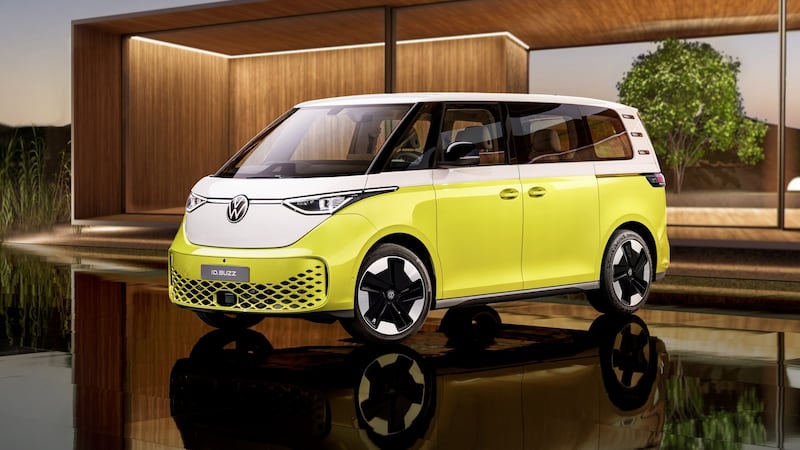
The ID Buzz will initially arrive in Ireland as a five-seater people mover or a commercial ID Cargo van. Both variants feature an 82kWh (77kWh net) rechargeable battery and a 150kW (200hp) electric motor.
Later this year a longer-bodied, seven-seat version will launch. It will have a larger battery with a driving range of about 500km.
"The ID. Buzz brings a lot of endearing charm and affinity with people back onto the road," the head of Volkswagen Design, Jozef Kaban, said.
“In the T1 (the original Kombi) you are practically sitting on top of the front axle - there’s no front overhang. While providing everything of relevance to safety and technology, the ID.Buzz has wonderfully short overhangs.”
For instance, the ID.Buzz will whip around a circle in 11 metres, or about the same as a Golf hatchback.
It will arrive with a 77kWh lithium-ion battery (which has a gross 82kWh energy capacity), and can be charged at up to 170kW, which will boost the ID.Buzz’s charge level from five to 80 per cent in just half an hour.
There will be a 111kWh battery option for the longer wheelbase, three-row version and a smaller battery pack will be available for the Cargo, to help increase its payload.
The 150kW brushless APP 310 permanent-magnet electric motor, sits on the rear axle with its single-speed transmission and, as far as Volkswagen is concerned, this is the only powertrain option.
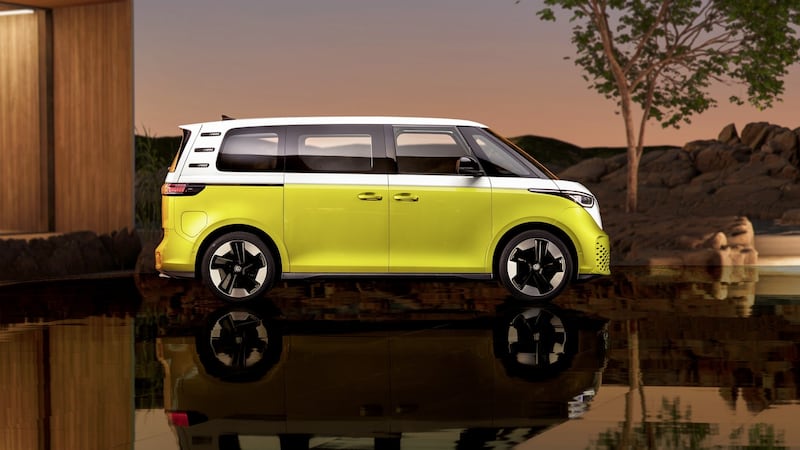
The ID.Buzz’s single motor generates 310Nm of torque, and Volkswagen limits the top speed to 145km/h, it doesn’t claim a 0-100km/h time.
Volkswagen has still not confirmed the range of the ID.Buzz, but it should be around 400km for the standard wheelbase versions and add another 200km or so for the long-wheelbase, 111kWh variant.
Volkswagen guarantees the battery life for eight years or 160,000km, and it can charge bi-directionally through one of the range of wallboxes it has engineered for the ID.Buzz.
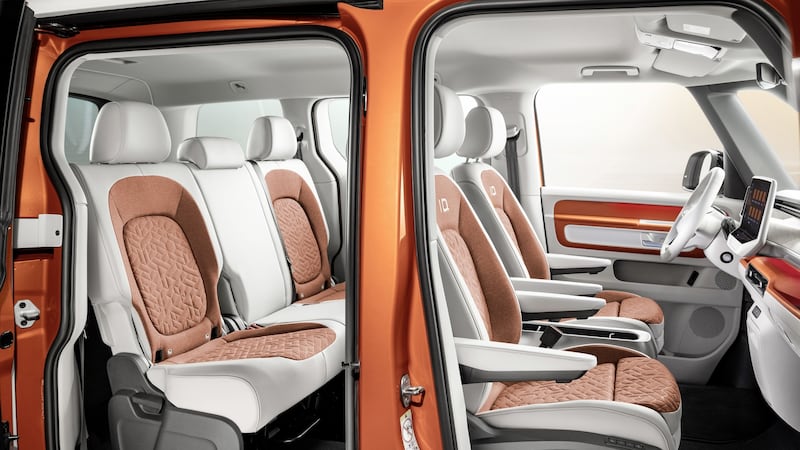
The ID.Buzz isn't expected in European customer hands until September, and the invasion of Ukraine - where a significant amount of Volkswagen Group wiring is made - could push that back even further.
Based on the same Modular Electric Drive Kit (MEB) as the Volkswagen ID.3, ID.4 and ID.6, the ID.Buzz forgoes leather trim in favour of more eco-friendly materials as well.
The ID.Buzz will launch as either a five-seat passenger format or with a choice of two or three seats in the Cargo version.
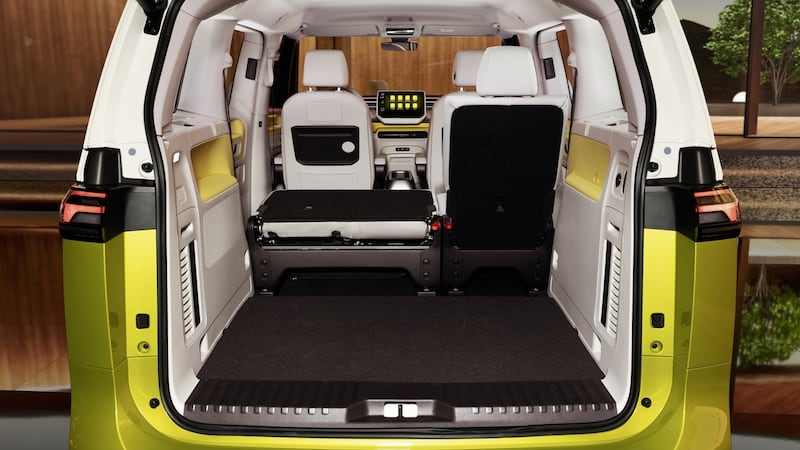
Even with its five seats fully occupied, the ID.Buzz will retain 1,121 litres of luggage capacity, which bumps up to 2,205 litres with the rear seats folded down.
The Cargo lifts this again, with enough load space for two Euro pallets and 3.9 cubic metres of space, along with six tie-down hooks and running rails to secure up to 650kg of freight.
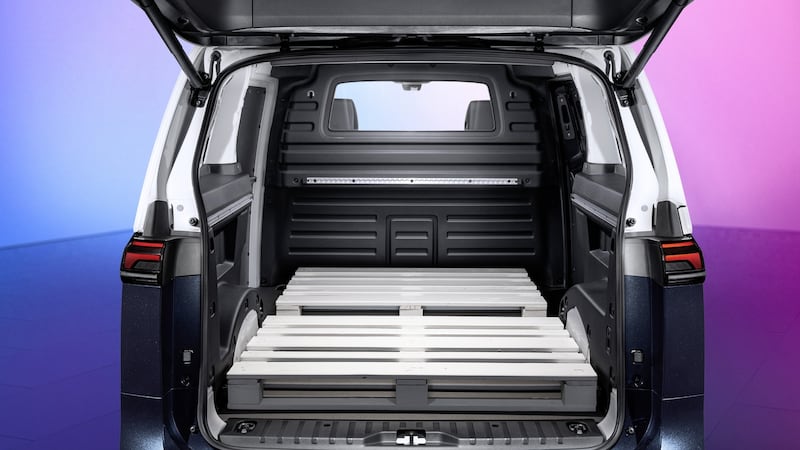
It also has a fixed partition between the cabin and the cargo area, which has lashing rails on each wall. It also ditches the second sliding door of the standard ID.Buzz, leaving it with just a footpath-side door, though the second door can be replaced as an option.
The electric van qualifies for an SEAI grant of €3,800 and will retail for about €50,000 net, including VAT.
Cabin
There is no news from Volkswagen on whether the Cargo’s bench front seat option will be available in the passenger version, which would take it out to a six seater. So the passenger ID.Buzz remains with two front seats, which can be optioned to captain’s chairs (with fold-down armrests), and a removable centre console.
The rear seat holds three people, and it can be folded down into the floor as a whole, or in 60:40 increments. It also has 150mm of sliding fore-aft adjustment to create either more cargo space or more legroom.
The driver sees a 5.3-inch display in front to keep it simple, but there is another 10-inch standard screen in the centre of the dash.
Volkswagen can option this up to 12 inches with the Discover Pro navigation setup, though the passenger version’s standard unit already has a permanent internet connection, an app-connect system for smartphone integration and DAB digital radio.
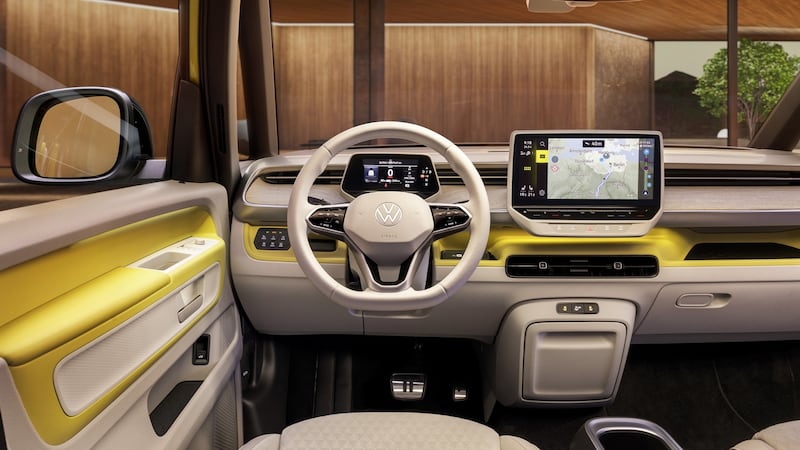
It looks and feels like a floating tablet, mounted vertically, with an airy space beneath it housing a control bar filled with touch sliders for the temperature and volume controls and digital buttons to shortcut the infotainment menus for air conditioning, assistance systems, driving modes and parking aids.
Its automatic transmission controls are on the steering column, and they’re limited to simple N for neutral, D for Drive and R for reverse. Otherwise, you just turn it off and leave it.
There are up to eight USB-C ports it the passenger version, including one in the front passenger and even in the rear-vision mirror’s mount, and an inductive smartphone charger.
There are USB-C ports in the two sliding rear doors as well, while the Cargo makes do with five ports.
There is a large, lidded area beneath the infotainment system with two cupholders, and they’re easily reached from the front seats that slide 245mm fore-and-aft, and have 61.5mm of height range.
Besides airbags in the steering wheel and dashboard, the ID.Buzz also mounts side airbags into the backrests of the front seats, and the driver’s seat has a centre airbag to prevent the front occupants hitting their heads together in crashes.
The central, removable console, perhaps unwisely dubbed the “Buzz Box” by Volkswagen, comes with 1.4 litres of capacity, a five-litre drawer area for, well, stuff, and an integrated bottle opener and ice scraper.
One notable downside of this EV van, however, is the likely inability to adapt or convert the ID Cargo for wheelchair access due to its rear-mounted motor and underfloor rechargeable battery pack. Most conversions require cutting into a vehicle’s rear axle and floor.
The ID Buzz and Cargo are connected cars and are prepped for over-the-air software updates. A host of driving-assistance aids will be available, one of note is park assist plus with an ability to carry out memorised parking manoeuvres.
Pre-booking for the first deliveries of this new VW EV will open shortly, while cheaper 55kWh version is expected in Ireland at a later date. That said, with VW suffering major supply issues due to the war in Ukraine and the general global chip shortages, it may well be some time before we see many of these buzz along on Irish roads.









